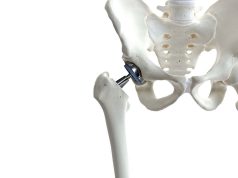Incidence of recurrent disease 3.17 and 3.33 percent per mastectomy and per patient, respectively, during median follow-up of 10 years
FRIDAY, Oct. 7, 2022 (HealthDay News) — For patients undergoing nipple-sparing mastectomy, overall breast cancer recurrence rates are low at a median follow-up of 10 years, according to a study published in the October issue of Plastic and Reconstructive Surgery.
Carter J. Boyd, M.D., from New York University Langone Health in New York City, and colleagues retrospectively reviewed all patients undergoing nipple-sparing mastectomy at a single institution to obtain a median of 10 years of follow-up. Data were included for 126 therapeutic nipple-sparing mastectomies performed on 120 patients.
The researchers found that the most frequently observed tumor histology included invasive ductal carcinoma and ductal carcinoma in situ (48.4 and 38.1 percent, respectively). The mean size of tumors was 1.62 cm. In 31.0 and 10.3 percent of nipple-sparing mastectomy specimens, respectively, multifocal or multicentric disease and lymphovascular invasion were present. In 84.9 percent of nipple-sparing mastectomies, sentinel lymph node biopsy was performed; 17.8 percent were positive. The rates of positive frozen subareolar biopsy and permanent subareolar pathology were 7.3 and 9.5 percent, respectively. Pathologic tumor stages were most frequently stage I and stage 0 (44.6 and 33.9 percent, respectively). Per mastectomy and per patient, the incidence of recurrent disease was 3.17 and 3.33 percent, respectively. No demographic, operative, or tumor-specific variables were independent risk factors for locoregional recurrence in a univariate analysis.
“Nipple-sparing mastectomy remains a viable option in the appropriately indicated patient with regard to long-term cancer recurrence,” the authors write. “Despite low rates of recurrence, close surveillance remains important to continually assess for long-term safety of nipple-sparing mastectomy.”
Copyright © 2022 HealthDay. All rights reserved.








